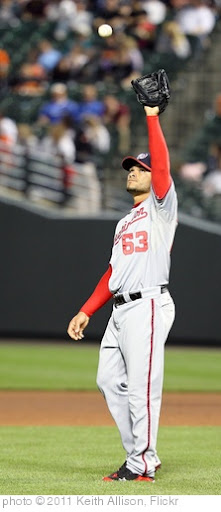 Today I'm just going to fly all over the place and randomly hit on some numbers that speak to me from the 2011 season. You know me, I'm random as all hell anyway, so this may not be any different than normal despite the intro warning you of the impending zaniness. Special thanks goes to the 2012 Bill James Handbook where a fair amount of the information you are about to read about comes from (I would highly recommend the book for those of you looking for a nice reference tool. Looking at my shelf I've got copies dating all the way back to 2001).
Today I'm just going to fly all over the place and randomly hit on some numbers that speak to me from the 2011 season. You know me, I'm random as all hell anyway, so this may not be any different than normal despite the intro warning you of the impending zaniness. Special thanks goes to the 2012 Bill James Handbook where a fair amount of the information you are about to read about comes from (I would highly recommend the book for those of you looking for a nice reference tool. Looking at my shelf I've got copies dating all the way back to 2001).
0 – The number of NL hurlers who received six runs of support per nine innings (the NL leader amongst qualifiers, 162 innings pitched, was Jaime Garcia at 5.92). Over in the Junior Circuit there were five guys who received at least six runs of support – Jon Lester (6.86), Ivan Nova (6.70), Max Scherzer (6.42), Rick Porcello (6.38) and Colby Lewis (6.15) . There was even one guy, Derek Holland, who was over seven runs of support per nine innings. My goodness, he was over seven and a half at 7.64 runs per nine innings, an ungodly number. Wins may not be so easy to come by for Holland in 2012, so keep that in mind on draft day..086 – The best batting average in baseball with Runners In Scoring Position (RISP) for a pitcher. Nationals' reliever extraordinaire Tyler Clippard was the owner of that mark. No other reliever had a mark under .125.
.228 – The OBP of leadoff batters last season against Justin Verlander, the lowest in baseball amongst hurlers who tossed at least 150 innings. Two others allowed less than a quarter of leadoff hitters to reach base in Cole Hamels (.247) and Jordan Zimmerman (.249).
6.1 – The major league leading inherited runner strand rate of the Royals' Greg Holland. Only one other pitcher in baseball was able to post a mark in the single digits and that was Al Alburquerque's mark of 9.7 percent. The NL leader was George Sherrill at 10.8 percent.
8 – The number of “tough loses†- defined as a Game Score above 50 when a loss was picked up – by Hiroki Kuroda, David Price and James Shields (there will be more on Game Scores below). That was the highest mark in baseball. At the other end of the spectrum we have “cheap wins,†those outings with a Game Score under 50 while a win was picked up. The leader in that dubious category was Brad Penny with six, one more than the mark of five by John Lackey.
53.1 – The percentage of pitches that were in the strike zone from Cliff Lee, the highest mark in baseball. The only other pitcher who hit the mark more than 50 percent of the time was an unlikely source – knuckleballer R.A. Dickey of the Mets at 51.0 percent.
96 – The best pitched game in baseball last year was Chris Capuano's effort on the 26th of August if you believe in Game Scores (an invention of Bill James that takes into account everything that a pitcher does on the hill). In that effort Capuano pitched nine shutout innings, allowed just two hits, didn't walk a batter, and struck out 13 (for more on Capuano see his Player Profile). Ervin Santana's no-hitter on July 27th gave him a score of 94 while Justin Verlander's no-hitter from May 7th resulted in a score of 90.
98.0 – The average fastball speed last season of the major league leader (minimum 50 innings pitched). If I gave you 37 guesses I doubt you'd settle on the right name. The most obvious name is Aroldis Chapman, but he came in second at 97.9 mph. The leader was actually the Nationals' Henry Rodriguez. Chapman did lead baseball with 158 pitches of at least 100 mph, 31 more than Rodriguez.
133 – The most pitches thrown in a game last season by Tim Lincecum. There were two other games over 130-pitches as team continue to monitor pitch counts very closely – Chris Carpenter (132), Roy Halladay (130).
By Ray Flowers
Player News
{{item.text}}
{{analysis.analysis}}


